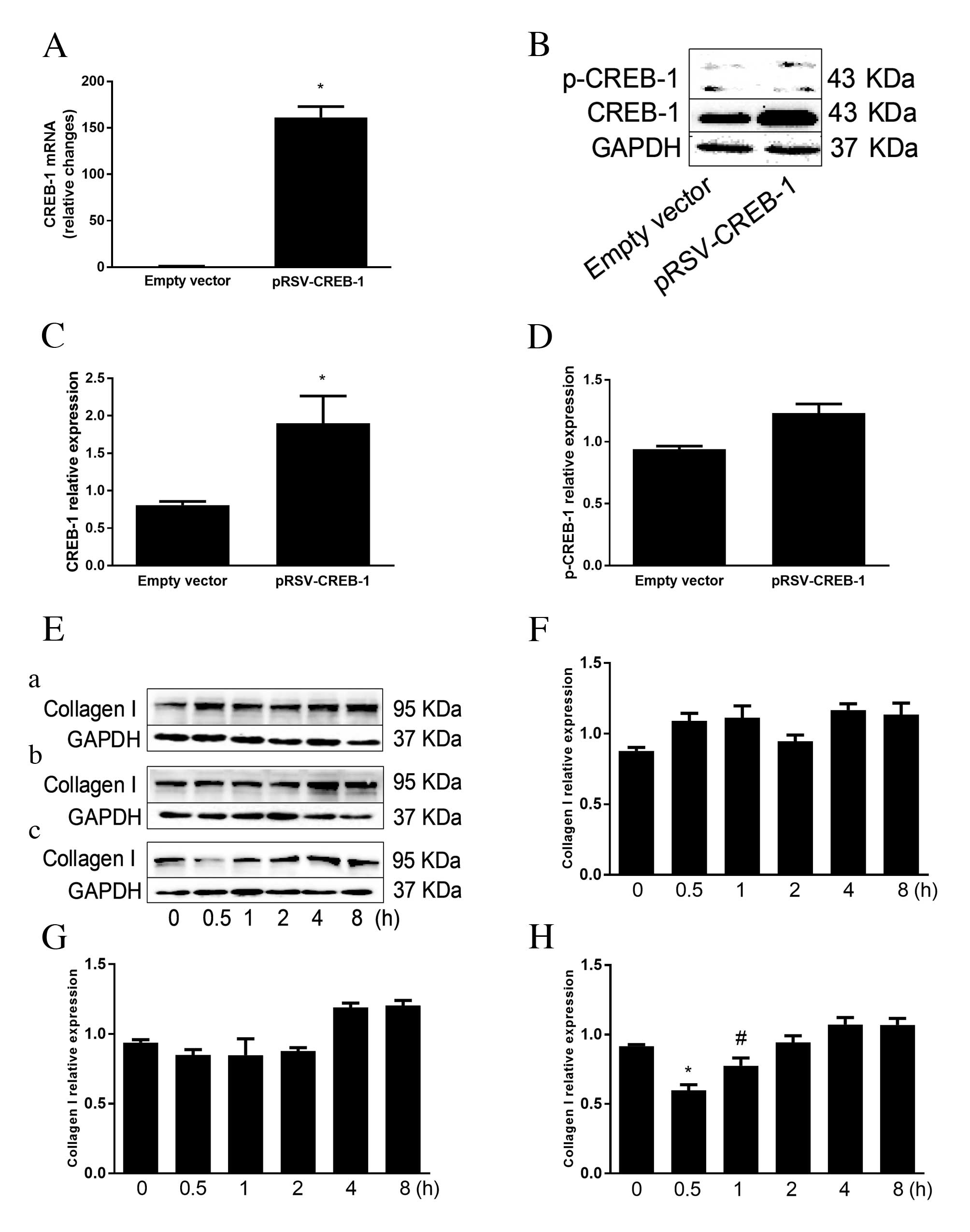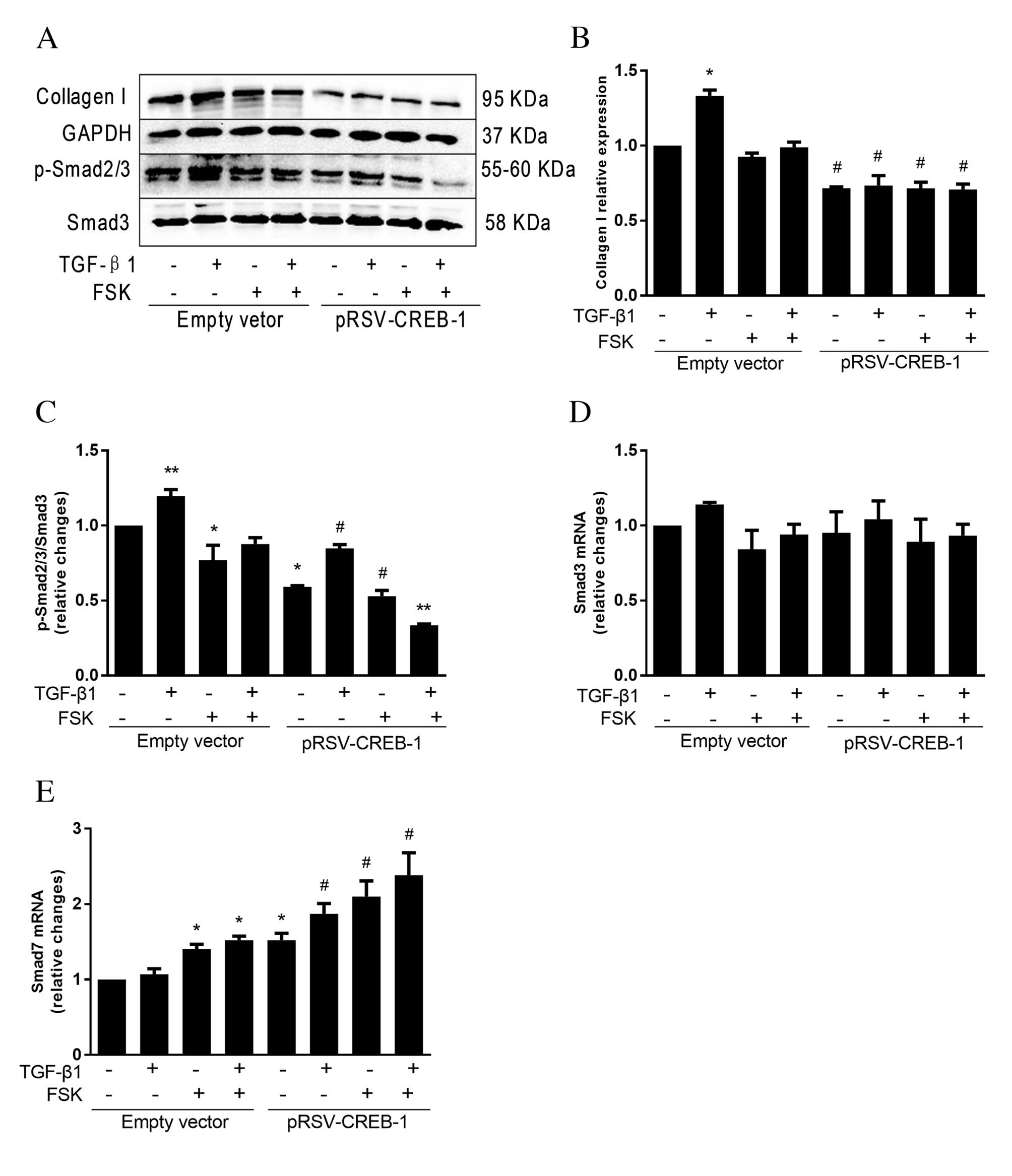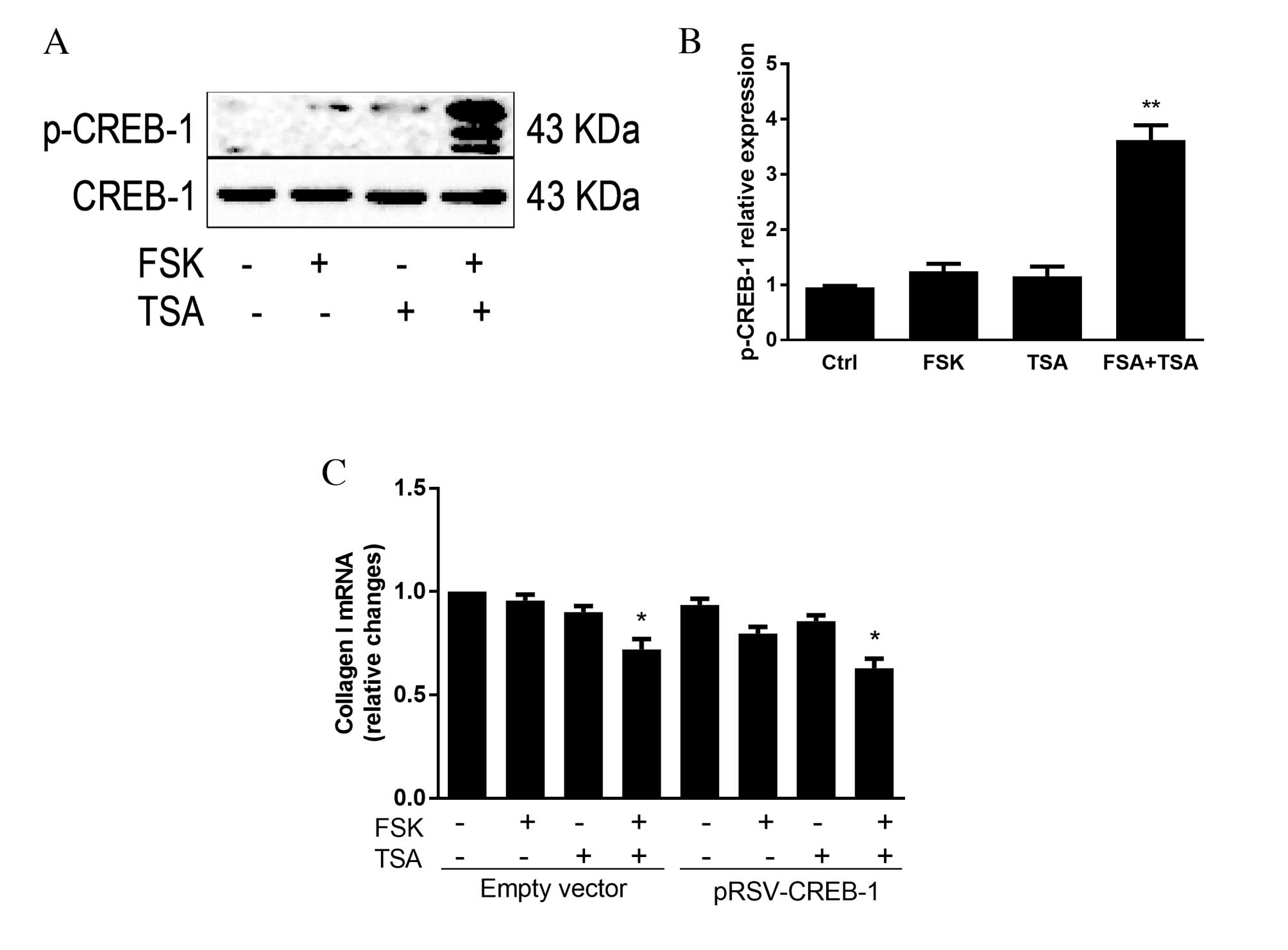|
1
|
He Y, Huang C, Sun X, Long XR, Lv XW and
Li J: MicroRNA-146a modulates TGF-beta1-induced hepatic stellate
cell proliferation by targeting SMAD4. Cell Signal. 24:1923–1930.
2012. View Article : Google Scholar : PubMed/NCBI
|
|
2
|
van der Smissen A, Samsonov S, Hintze V,
Scharnweber D, Moeller S, Schnabelrauch M, Pisabarro MT and
Anderegg U: Artificial extracellular matrix composed of collagen I
and highly sulfated hyaluronan interferes with TGFβ(1) signaling
and prevents TGFβ(1)-induced myofibroblast differentiation. Acta
Biomater. 9:7775–7786. 2013. View Article : Google Scholar : PubMed/NCBI
|
|
3
|
Zhang Y, Liu P, Gao X, Qian W and Xu K:
rAAV2-TGF-β(3) decreases collagen synthesis and deposition in the
liver of experimental hepatic fibrosis rat. Dig Dis Sci.
55:2821–2830. 2010. View Article : Google Scholar : PubMed/NCBI
|
|
4
|
Deng L, Li Y, Huang JM, Zhou GY, Qian W
and Xu KS: Effects of p-CREB-1 on transforming growth factor-β3
auto-regulation in hepatic stellate cells. J Cell Biochem.
112:1046–1054. 2011. View Article : Google Scholar : PubMed/NCBI
|
|
5
|
Chan EC, Dusting GJ, Guo N, Peshavariya
HM, Taylor CJ, Dilley R, Narumiya S and Jiang F: Prostacyclin
receptor suppresses cardiac fibrosis: Role of CREB phosphorylation.
J Mol Cell Cardiol. 49:176–185. 2010. View Article : Google Scholar : PubMed/NCBI
|
|
6
|
Liu X, Sun SQ and Ostrom RS: Fibrotic lung
fibroblasts show blunted inhibition by cAMP due to deficient cAMP
response element-binding protein phosphorylation. J Pharmacol Exp
Ther. 315:678–687. 2005. View Article : Google Scholar : PubMed/NCBI
|
|
7
|
Liu X, Sun SQ, Hassid A and Ostrom RS:
cAMP Inhibits transforming growth factor-beta-stimulated collagen
synthesis via inhibition of extracellular signal-regulated kinase
1/2 and smad signaling in cardiac fibroblasts. Mol Pharmacol.
70:1992–2003. 2006. View Article : Google Scholar : PubMed/NCBI
|
|
8
|
Johannessen M, Delghandi MP and Moens U:
What turns CREB on? Cell Signal. 16:1211–1227. 2004. View Article : Google Scholar : PubMed/NCBI
|
|
9
|
Livak KJ and Schmittgen TD: Analysis of
relative gene expression data using real-time quantitative PCR and
the 2(−Delta Delta C(T)) Methods. Methods. 25:402–408. 2001.
View Article : Google Scholar : PubMed/NCBI
|
|
10
|
Husse B and Isenberg G: Cyclic mechanical
strain causes cAMP-response element binding protein activation by
different pathways in cardiac fibroblasts. Heart Int.
5:e32010.PubMed/NCBI
|
|
11
|
Yoshida K and Matsuzaki K: Differential
regulation of TGF-β/Smad signaling in hepatic stellate cells
between acute and chronic liver injuries. Front Physiol. 3:532012.
View Article : Google Scholar : PubMed/NCBI
|
|
12
|
Ran I, Laplante I and Lacaille JC:
CREB-dependent transcriptional control and quantal changes in
persistent long-term potentiation in hippocampal interneurons. J
Neurosci. 32:6335–6350. 2012. View Article : Google Scholar : PubMed/NCBI
|
|
13
|
Michael LF, Asahara H, Shulman AI, Kraus
WL and Montminy M: The phosphorylation status of a cyclic
AMP-responsive activator is modulated via a chromatin-dependent
mechanism. Mol Cell Biol. 20:1596–1603. 2000. View Article : Google Scholar : PubMed/NCBI
|
|
14
|
Wen AY, Sakamoto KM and Miller LS: The
role of the transcription factor CREB in immune function. J
Immunol. 185:6413–6419. 2010. View Article : Google Scholar : PubMed/NCBI
|
|
15
|
Xing D and Bonanno JA: Effect of cAMP on
TGFbeta1-induced corneal keratocyte-myofibroblast transformation.
Invest Ophthalmol Vis Sci. 50:626–633. 2009. View Article : Google Scholar : PubMed/NCBI
|
|
16
|
Ding N, Yu RT, Subramaniam N, Sherman MH,
Wilson C, Rao R, Leblanc M, Coulter S, He M, Scott C, et al: A
vitamin D receptor/SMAD genomic circuit gates hepatic fibrotic
response. Cell. 153:601–613. 2013. View Article : Google Scholar : PubMed/NCBI
|
|
17
|
Chung AC, Dong Y, Yang W, Zhong X, Li R
and Lan HY: Smad7 suppresses renal fibrosis via altering expression
of TGF-β/Smad3-regulated microRNAs. Mol Ther. 21:388–398. 2013.
View Article : Google Scholar : PubMed/NCBI
|
|
18
|
Li L, Fan D, Wang C, Wang JY, Cui XB, Wu
D, Zhou Y and Wu LL: Angiotensin II increases periostin expression
via Ras/p38 MAPK/CREB and ERK1/2/TGF-β1 pathways in cardiac
fibroblasts. Cardiovasc Res. 91:80–89. 2011. View Article : Google Scholar : PubMed/NCBI
|
|
19
|
Cho IJ, Kim YW, Han CY, Kim EH, Anderson
RA, Lee YS, Lee CH, Hwang SJ and Kim SG: E-cadherin antagonizes
transforming growth factor β1 gene induction in hepatic stellate
cells by inhibiting RhoA-dependent Smad3 phosphorylation.
Hepatology. 52:2053–2064. 2010. View Article : Google Scholar : PubMed/NCBI
|
|
20
|
Lee KS, Park SJ, Kim SR, Min KH, Lee KY,
Choe YH, Hong SH, Lee YR, Kim JS, Hong SJ and Lee YC: Inhibition of
VEGF blocks TGF-beta1 production through a PI3K/Akt signalling
pathway. Eur Respir J. 31:523–531. 2008. View Article : Google Scholar : PubMed/NCBI
|
|
21
|
Zhang L, Li Y, Chen M, Su X, Yi D, Lu P
and Zhu D: 15-LO/15-HETE mediated vascular adventitia fibrosis via
p38 MAPK-dependent TGF-β. J Cell Physiol. 229:245–257. 2014.
View Article : Google Scholar : PubMed/NCBI
|
|
22
|
Ding ZY, Jin GN, Liang HF, Wang W, Chen
WX, Datta PK, Zhang MZ, Zhang B and Chen XP: Transforming growth
factor β induces expression of connective tissue growth factor in
hepatic progenitor cells through Smad independent signaling. Cell
Signal. 25:1981–1992. 2013. View Article : Google Scholar : PubMed/NCBI
|
|
23
|
Yang L, Inokuchi S, Roh YS, Song J, Loomba
R, Park EJ and Seki E: Transforming growth factor-β signaling in
hepatocytes promotes hepatic fibrosis and carcinogenesis in mice
with hepatocyte-specific deletion of TAK1. Gastroenterology.
144:1042–1054.e4. 2013. View Article : Google Scholar : PubMed/NCBI
|
|
24
|
Kasper LH, Lerach S, Wang J, Wu S, Jeevan
T and Brindle PK: CBP/p300 double null cells reveal effect of
coactivator level and diversity on CREB transactivation. EMBO J.
29:3660–3672. 2010. View Article : Google Scholar : PubMed/NCBI
|
|
25
|
Wang J, Weaver IC, Gauthier-Fisher A, Wang
H, He L, Yeomans J, Wondisford F, Kaplan DR and Miller FD: CBP
histone acetyltransferase activity regulates embryonic neural
differentiation in the normal and Rubinstein-Taybi syndrome brain.
Dev Cell. 18:114–125. 2010. View Article : Google Scholar : PubMed/NCBI
|
|
26
|
Chen W, Lam SS, Srinath H, Schiffer CA,
Royer WE Jr and Lin K: Competition between Ski and CREB-binding
protein for binding to Smad proteins in transforming growth
factor-beta signaling. J Biol Chem. 282:11365–11376. 2007.
View Article : Google Scholar : PubMed/NCBI
|














